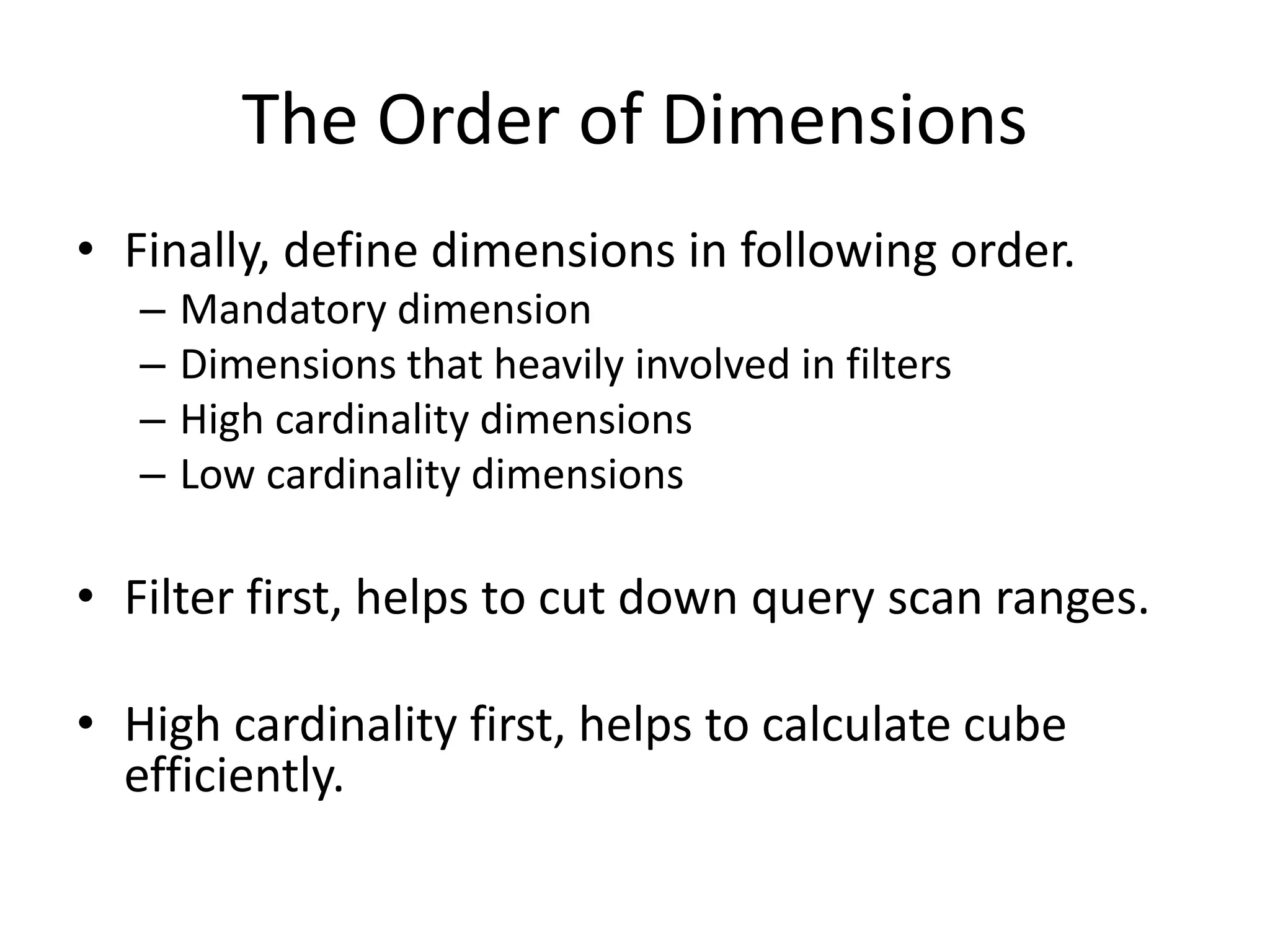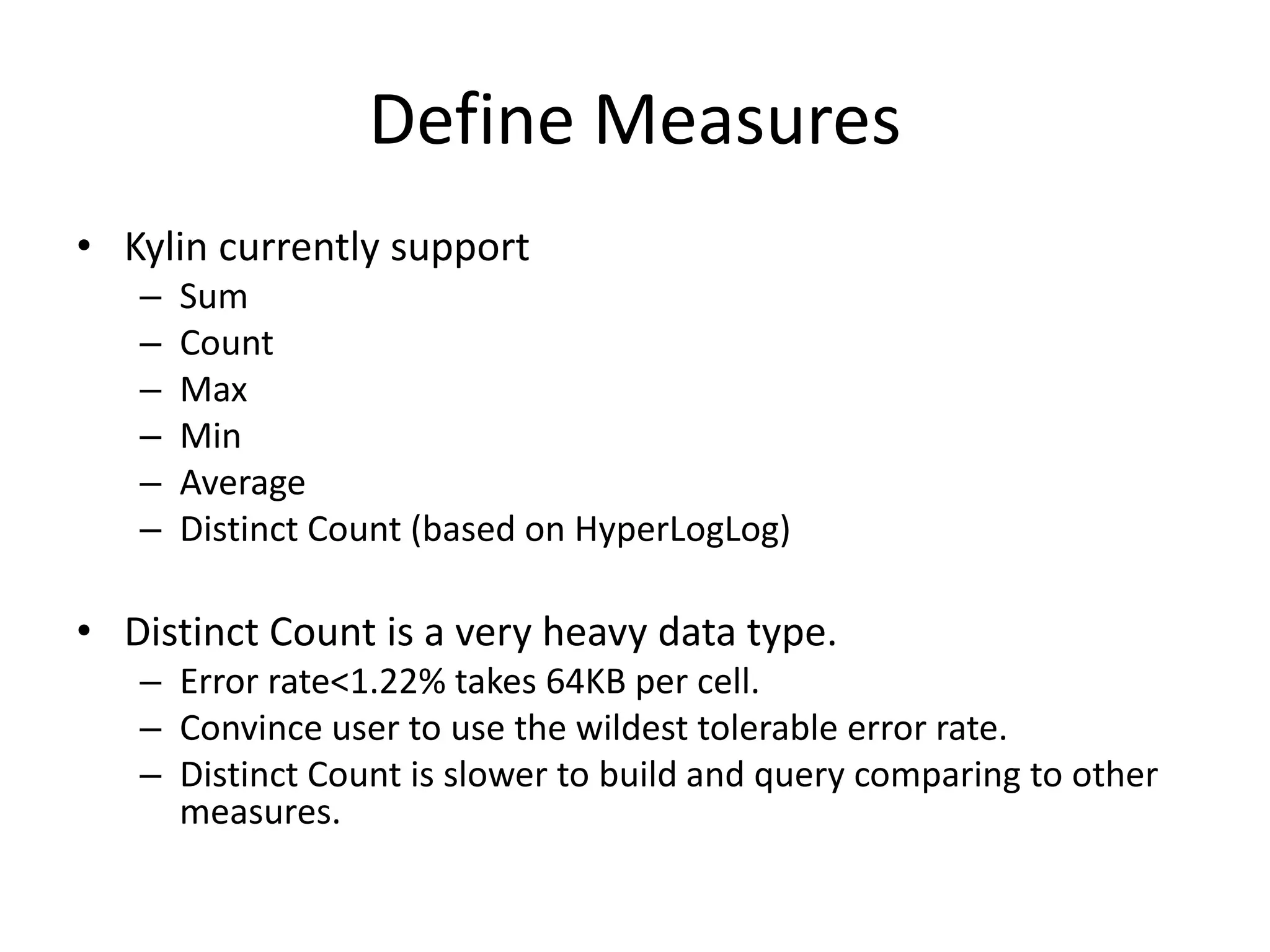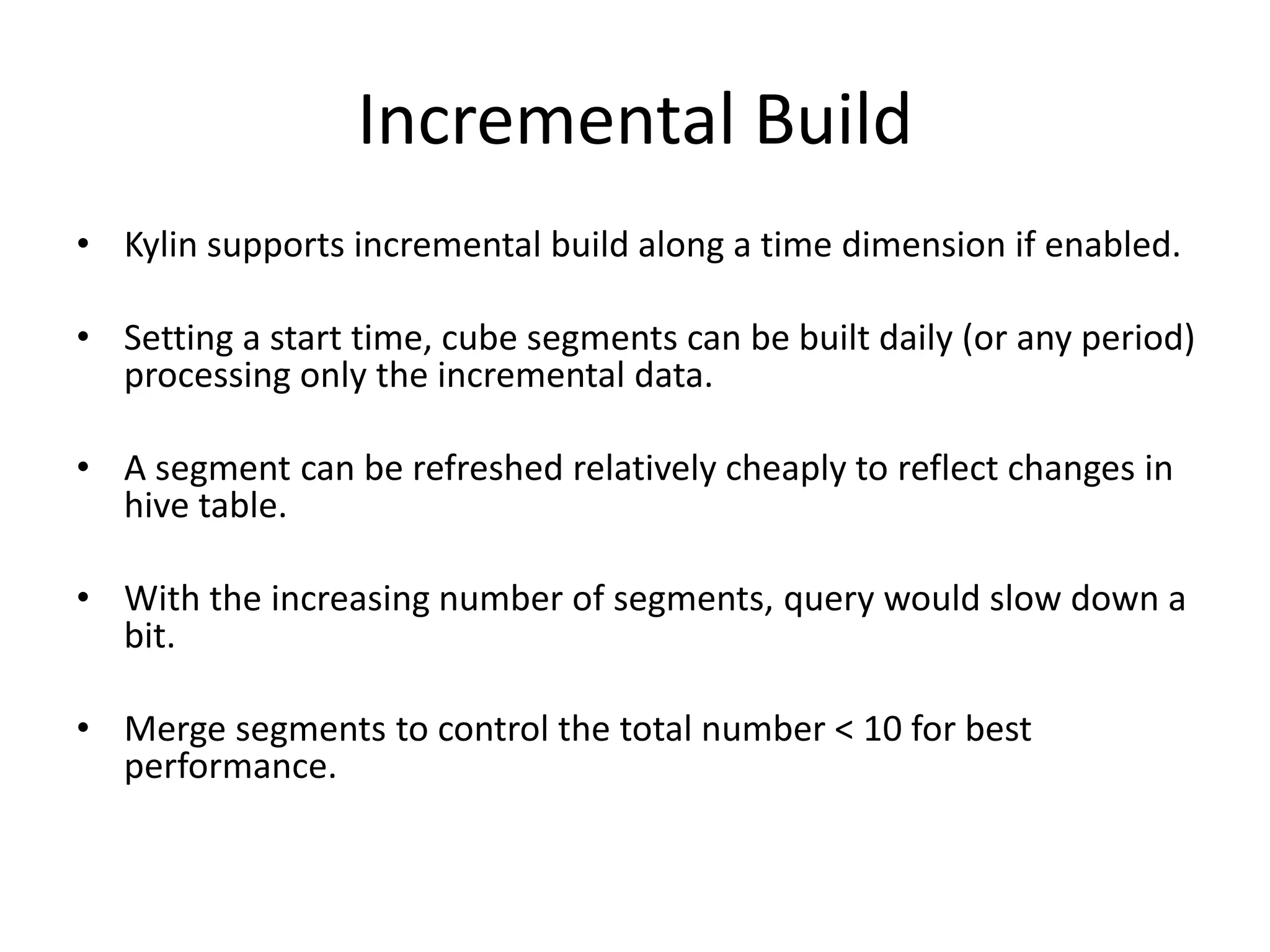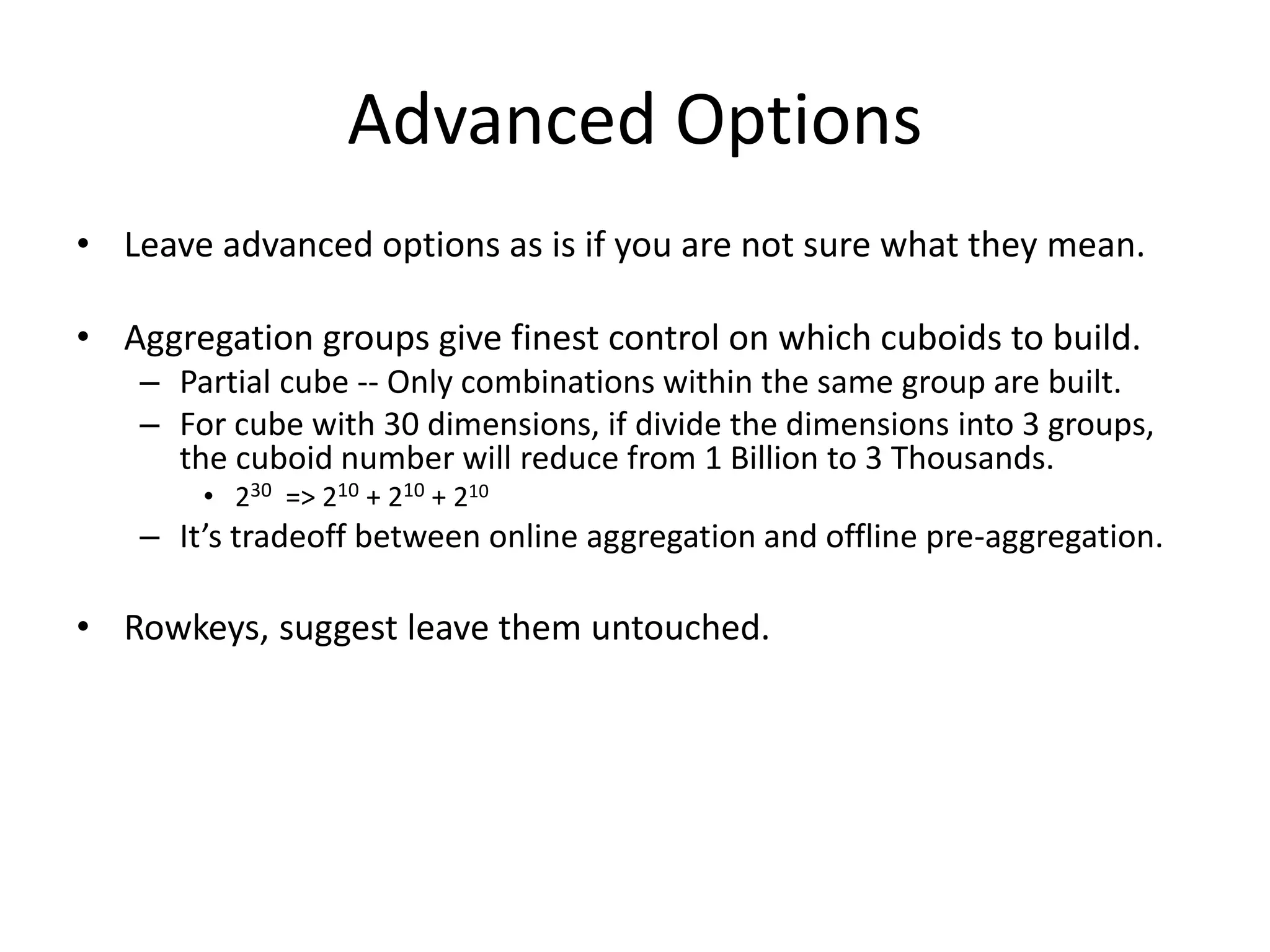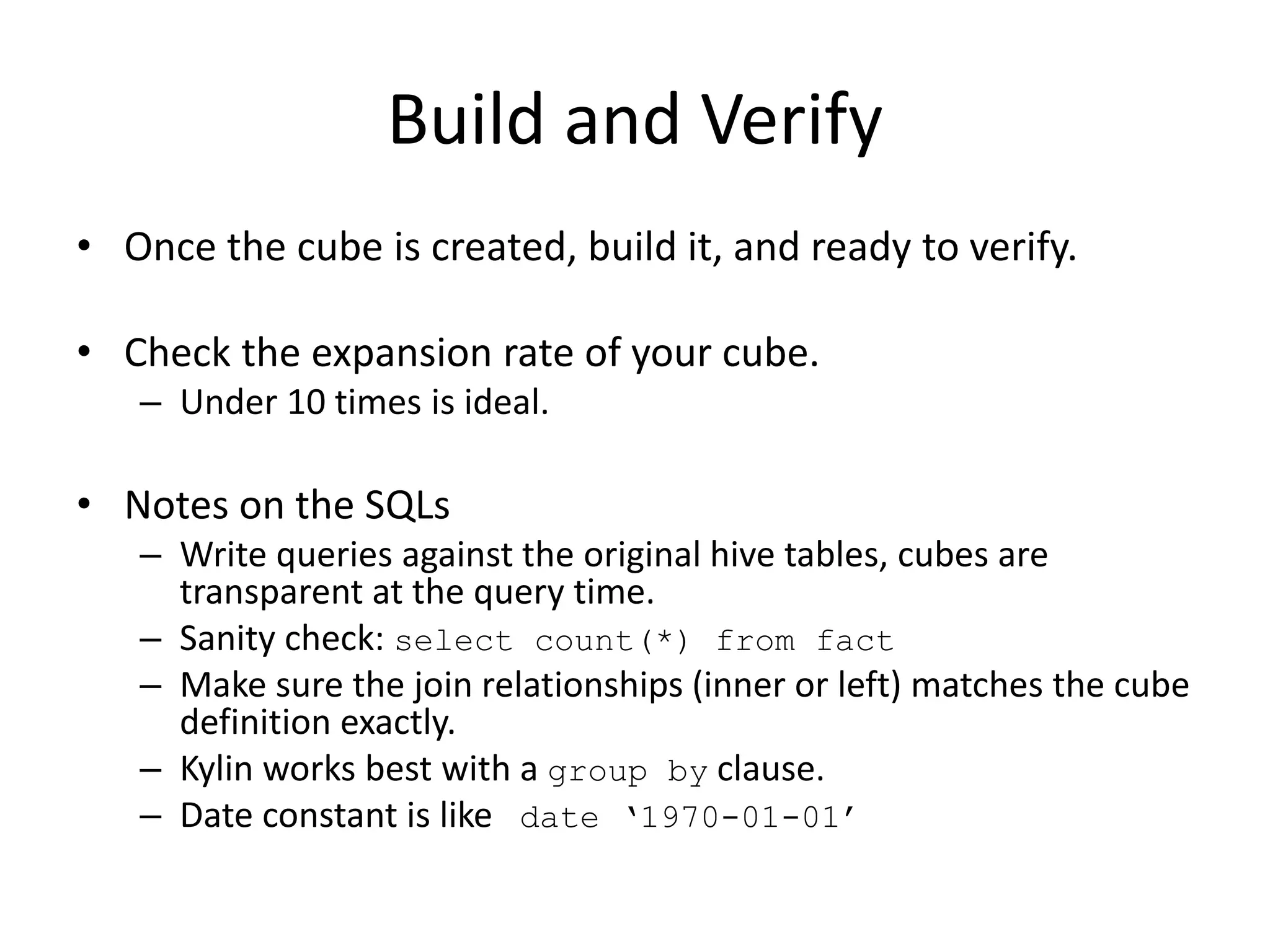The document provides guidelines for designing efficient cubes using Kylin, a MOLAP engine on Hadoop, emphasizing the importance of understanding star schemas, cardinalities, and dimension types. It covers best practices for defining dimensions and measures, managing incremental builds, and optimizing cube performance through advanced options, with a focus on maintaining high query efficiency. Key recommendations include limiting the number of dimensions, prioritizing mandatory and high cardinality dimensions, and organizing dimensions into logical groups.


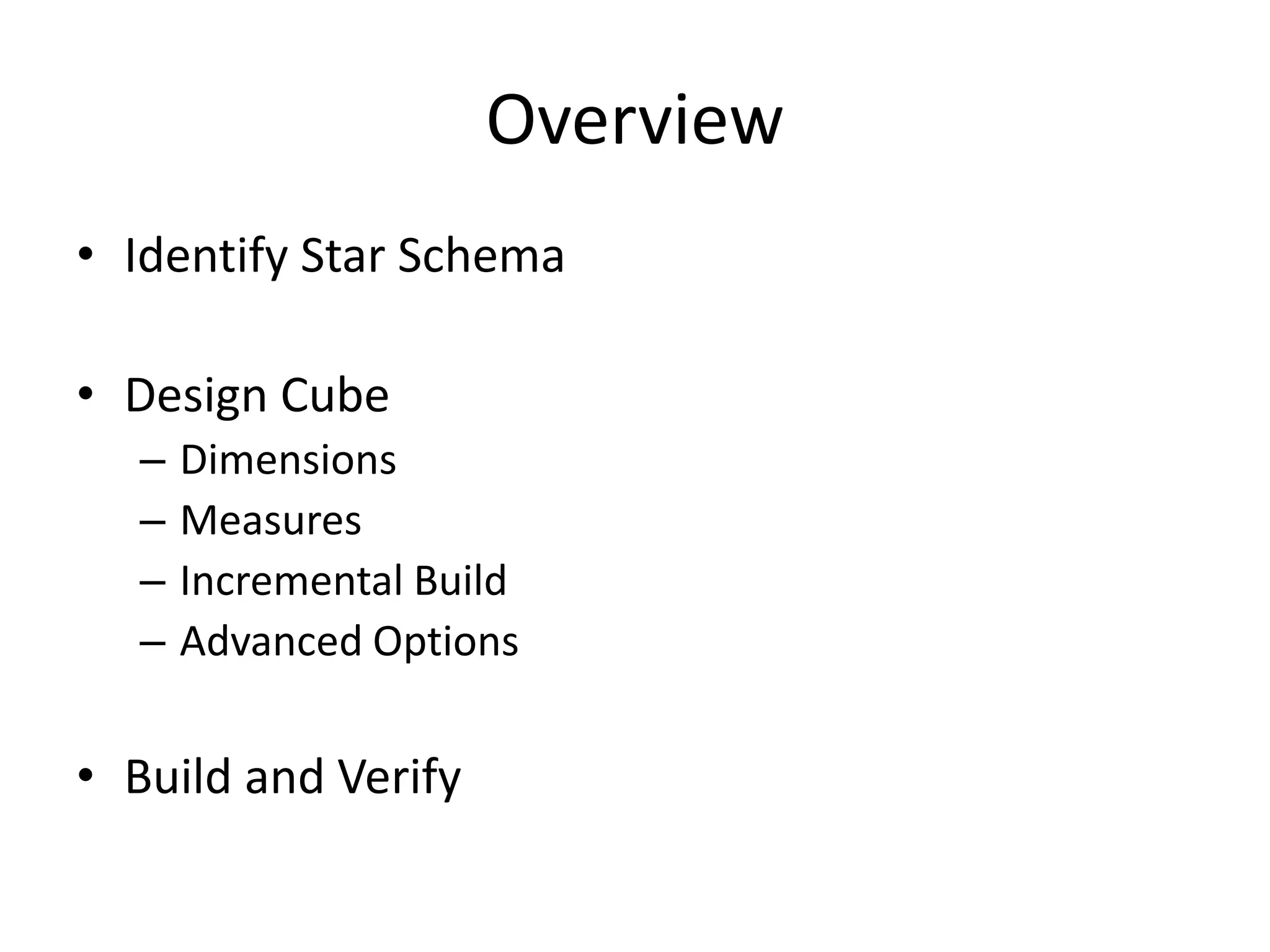
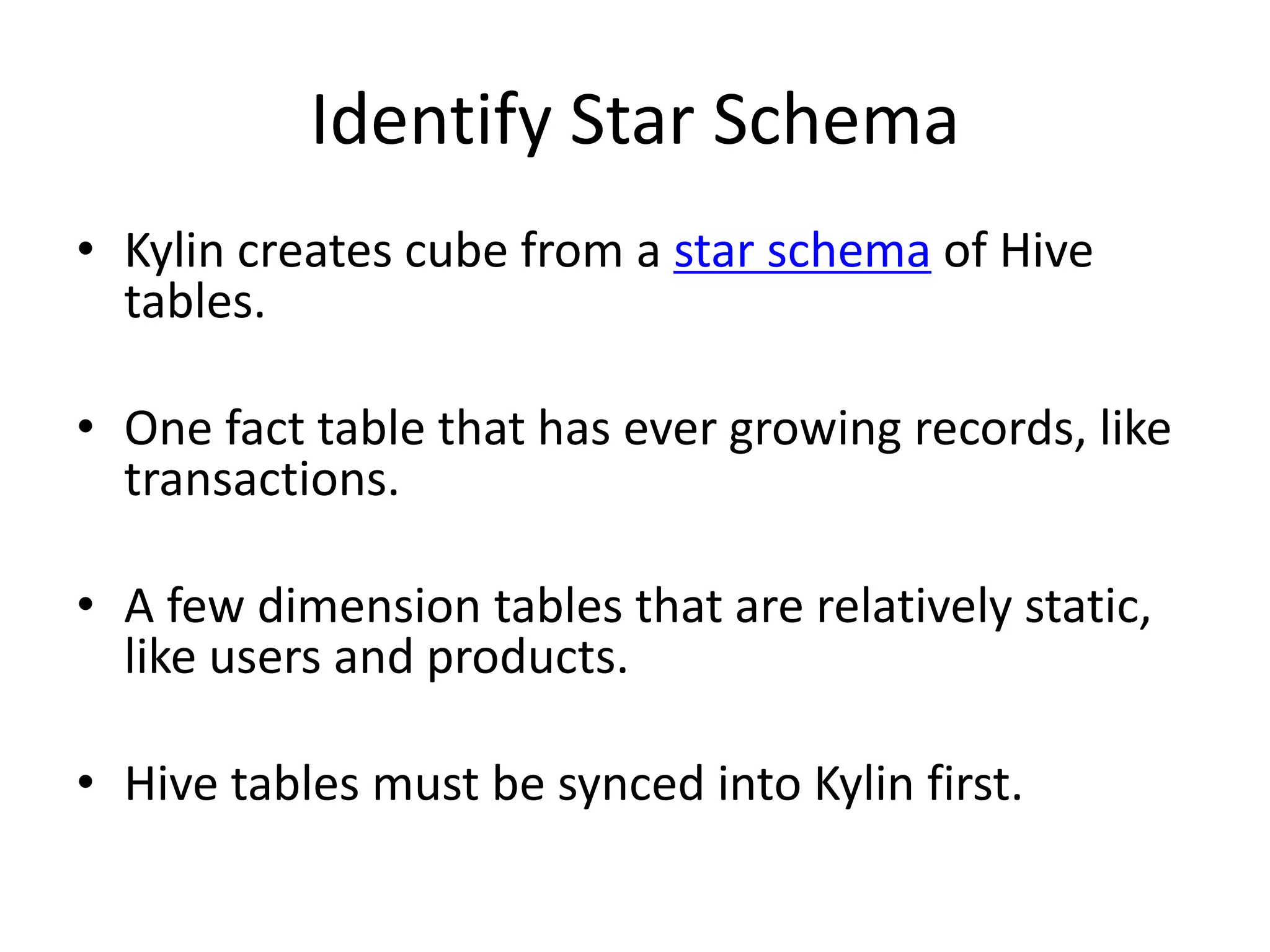

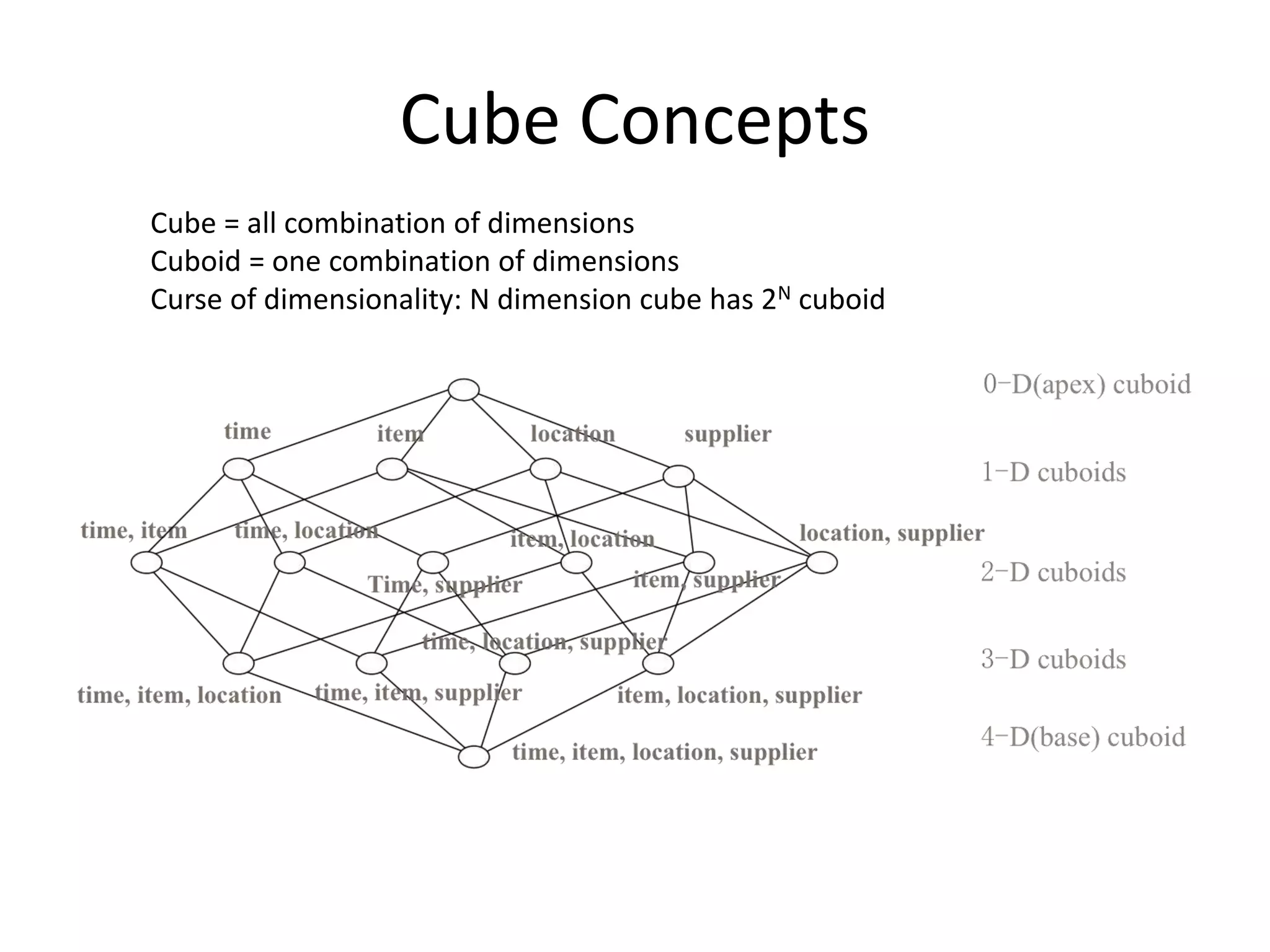
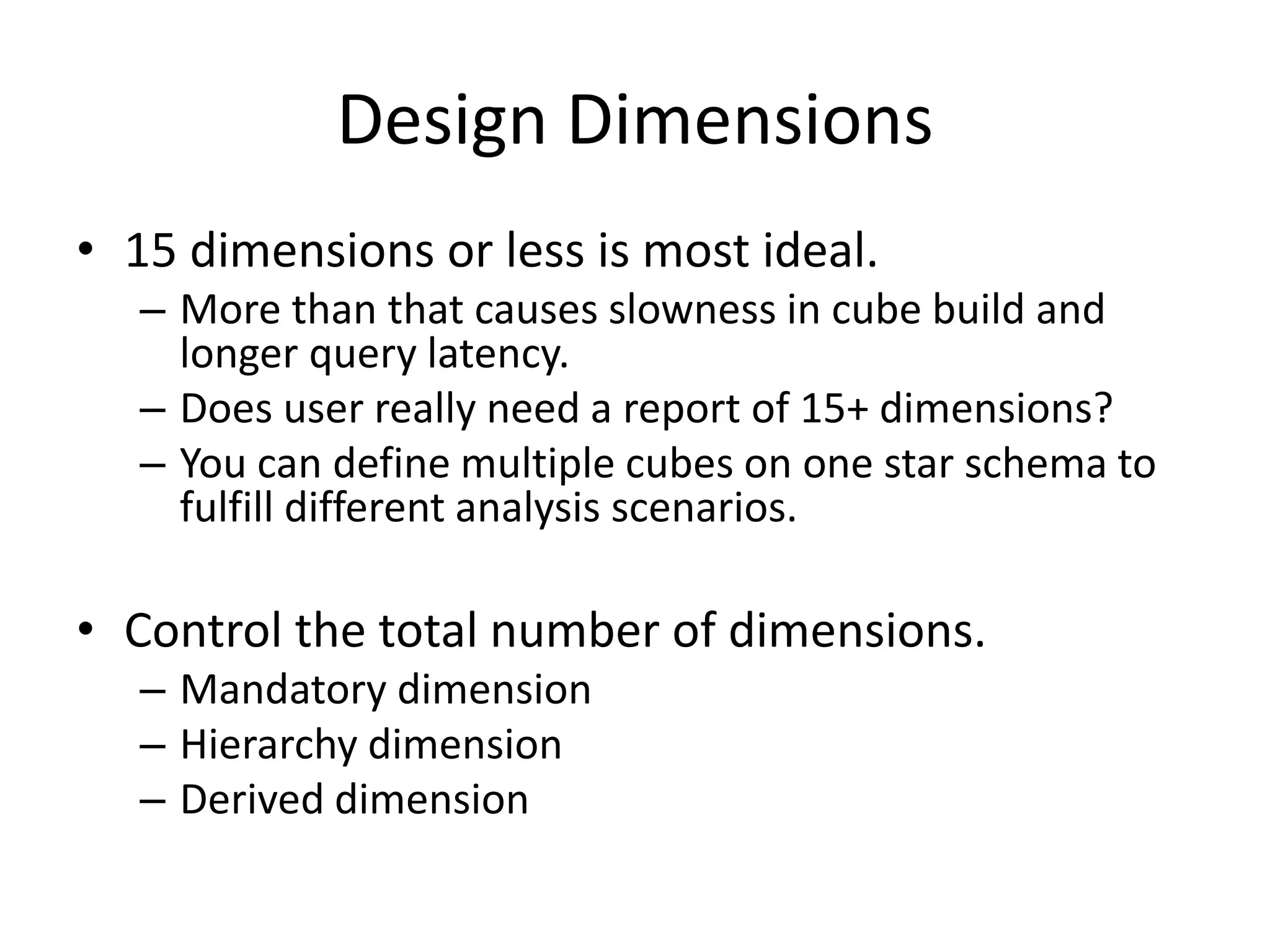
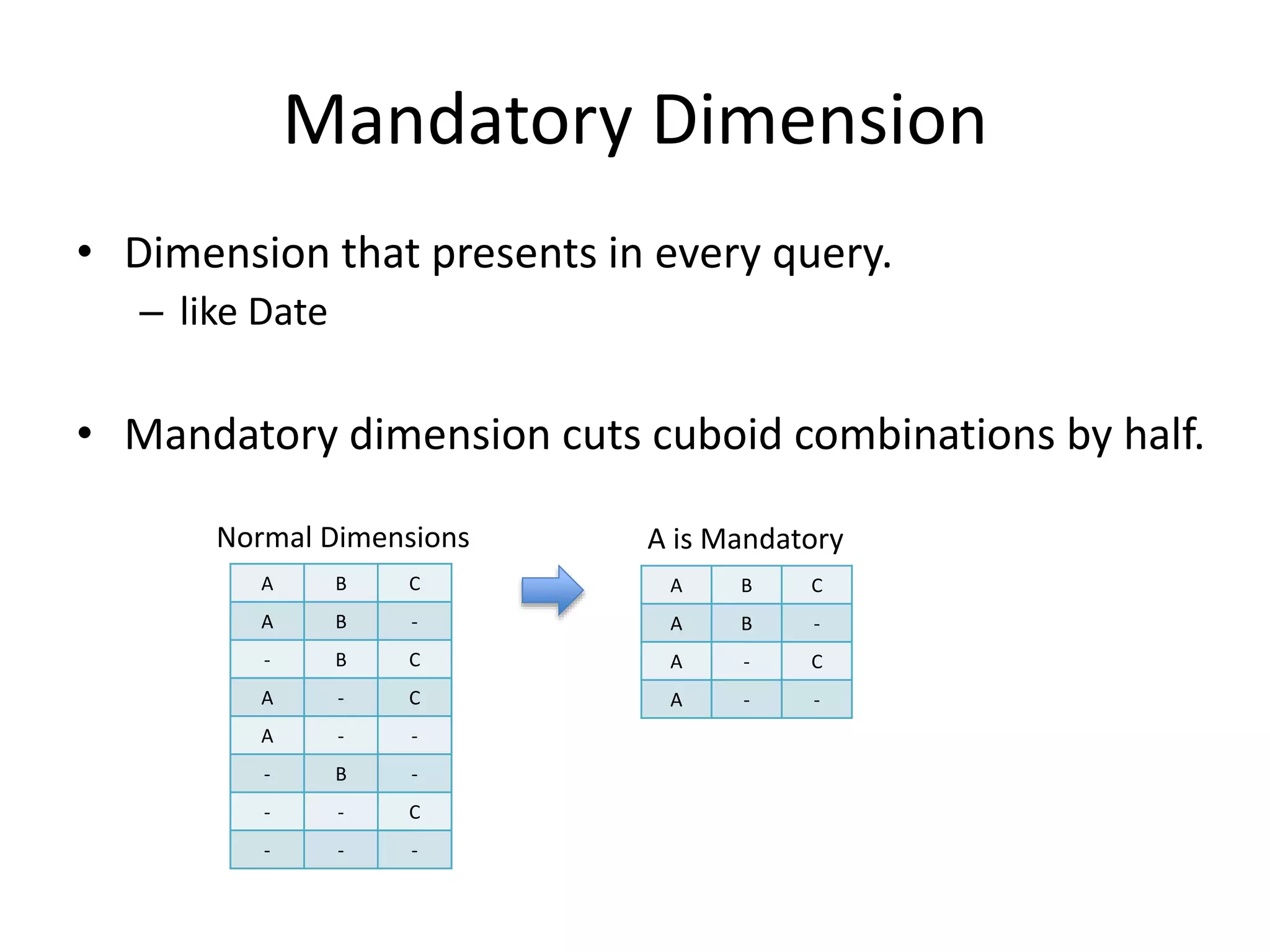
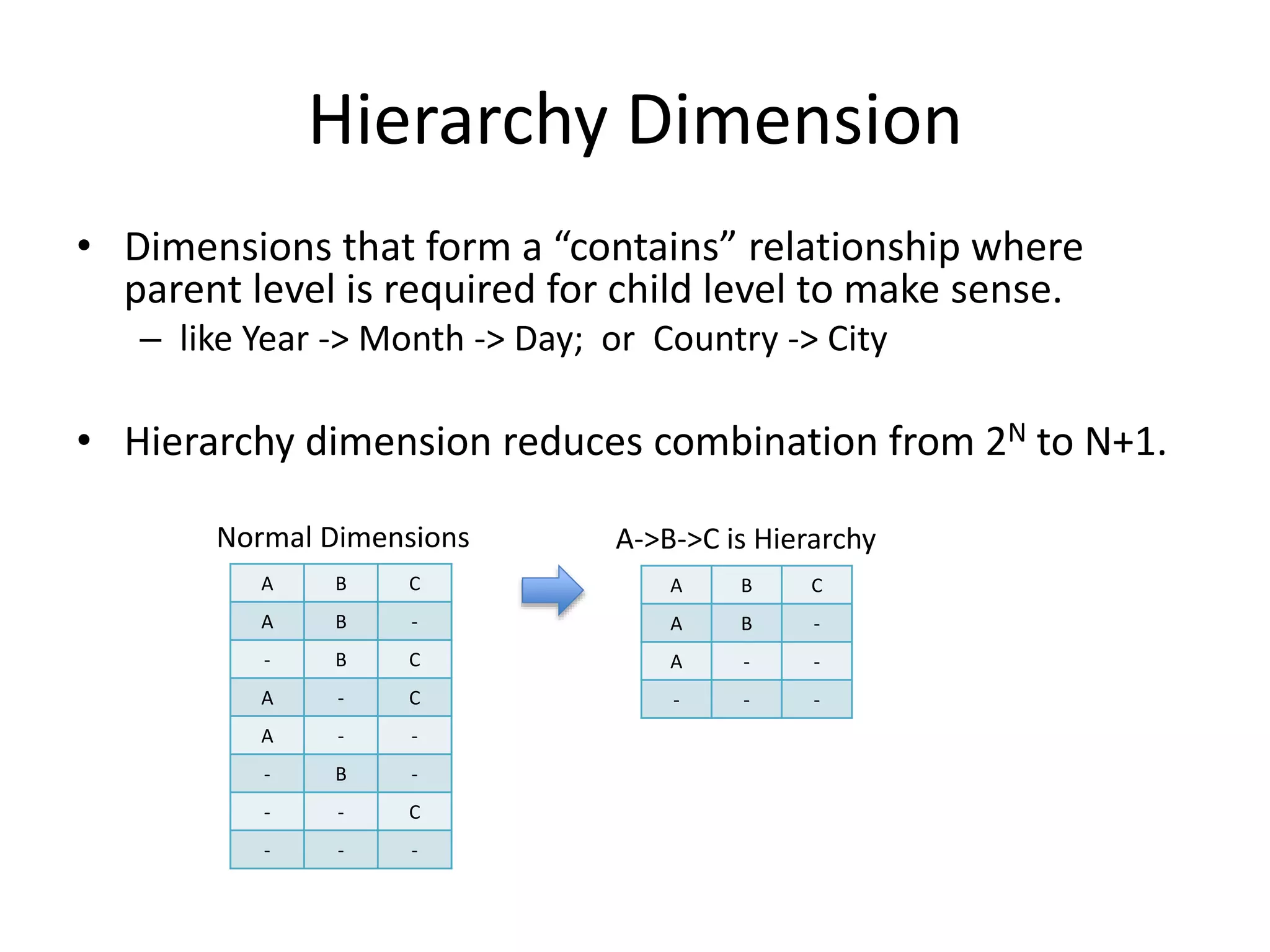
![Derived Dimension
• Dimensions on lookup table that can be derived by PK.
– like User ID derives [Name, Age, Gender]
• Derived dimension reduces combination from 2N to 2 at the
cost of extra runtime aggregation.
Normal Dimensions
A B C
A B -
- B C
A - C
A - -
- B -
- - C
- - -
A, B, C are Derived by ID
ID
-](https://image.slidesharecdn.com/designcubeinkylin-141223034404-conversion-gate02/75/Design-cube-in-Apache-Kylin-10-2048.jpg)
